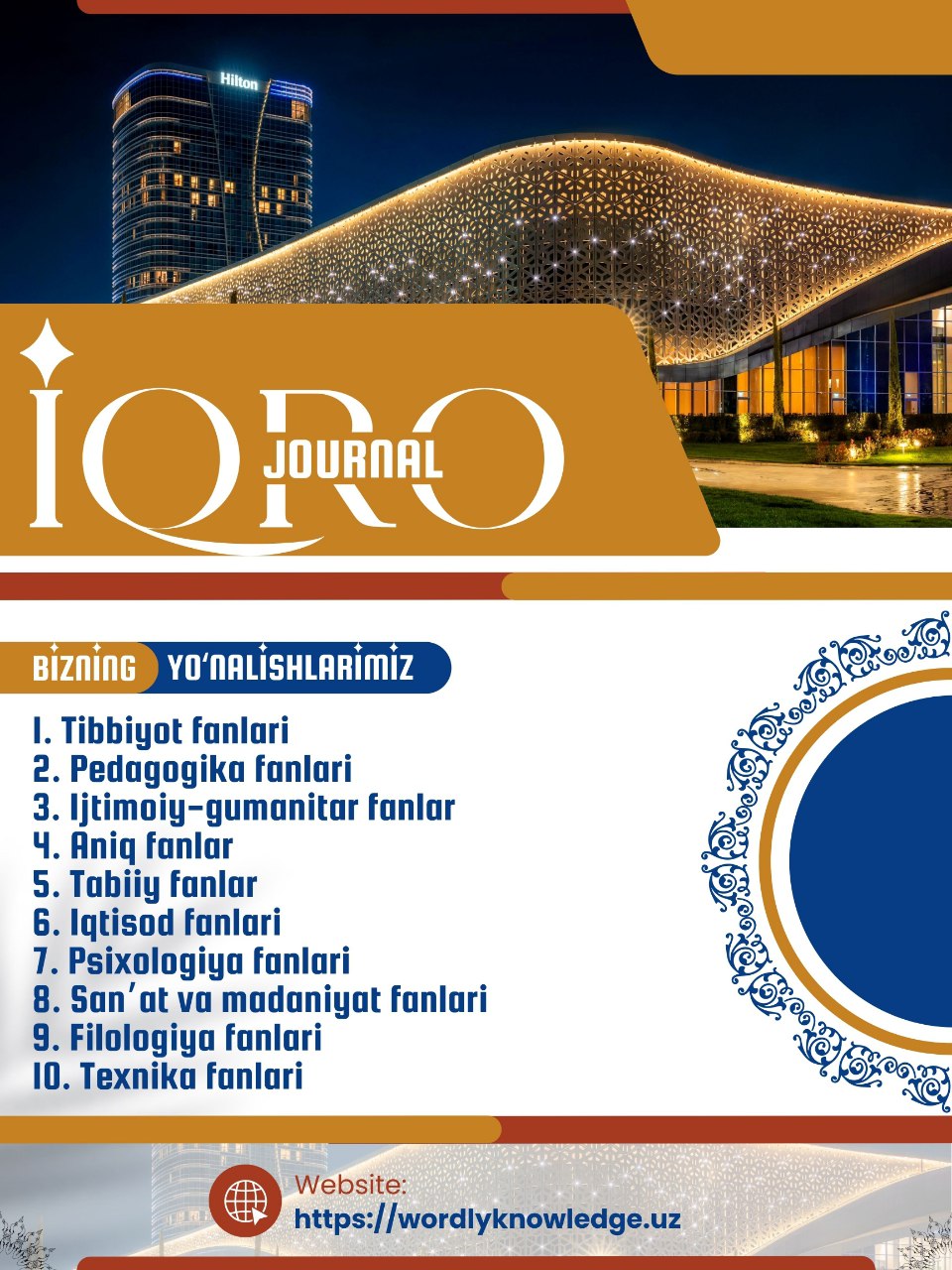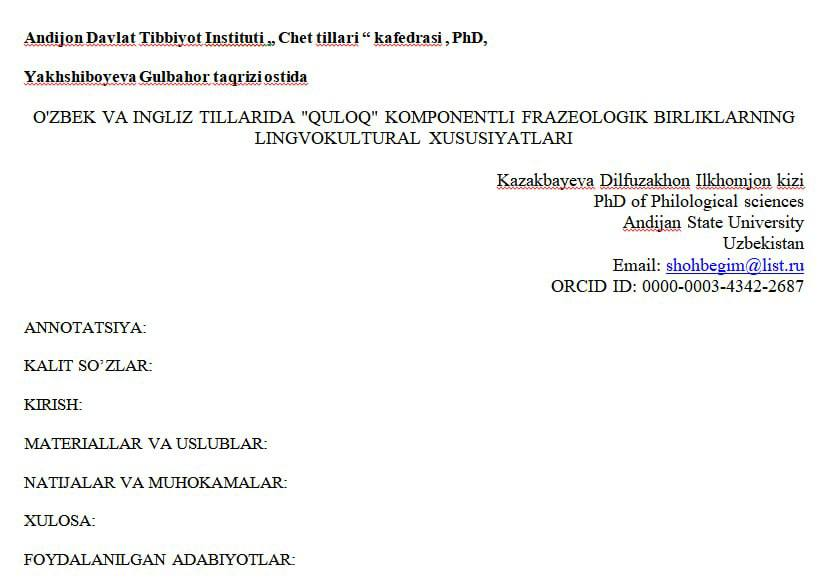ИЗУЧЕНИЕ ИССЛЕДОВАНИЙ ПО МОНИТОРИНГУ И ПРОГРЕССА ЭПИДЕМИОЛОГИЧЕСКИХ ЗАБОЛЕВАНИЙ
Keywords:
эпидемия, пандемия, инфекционные заболевания, грипп, контроль, мониторинг, математическая модель, статистическая модель.Abstract
После крупнейшей пандемии COVID-19 мониторинг и контроль всех инфекционных и эпидемиологических заболеваний приобрело все более актуальный вид. В статье приведены краткие данные об исследованиях, в которых описаны различные инфекционные и эпидемиологические заболевания, методы предотвращения и контроля их. Приведены сравнительные характеристики исследований.
References
1.Ling Li, Gaogao Dong, Huaiping Zhu, Lixin Tian. Impact of multiple doses of vaccination on epidemiological spread in multiple networks // Applied Mathematics and Computation. - 2024., V.472. 128617. https://doi.org/10.1016/j.amc.2024.128617.
2.Xuexin Yu a b, Richard N. Jones c, Lindsay C. Kobayashi a d e, Alden L. Gross f g . Cross-national statistical harmonization of the Center for Epidemiologic Studies Depression (CES-D) scale among older adults in China, England, India, Mexico, South Africa, and the United States // Journal of Clinical Epidemiology 2025., - V. 178. – 111623. https://doi.org/10.1016/j.jclinepi.2024.111623
3.Jinyu Xiao B.Med et al. Adult Height, Cardiovascular Disease, and the Underlying Mechanism: A Comprehensive Epidemiological and Genetic Analysis // Canadian Journal of Cardiology. Available online - 2025. https://doi.org/10.1016/j.cjca.2025.03.027
4.Edmond Menya a c d, Roberto Interdonato b c, Dickson Owuor d, Mathieu Roche. Explainable epidemiological thematic features for event based disease surveillance // Expert Systems with Applications. V.250, - 2024, 123894. https://doi.org/10.1016/j.eswa.2024.123894
5.Naif Alotaibi, A.S. Al-Moisheer, Amal S. Hassan, Ibrahim Elbatal, Salem A. Alyami, Ehab M. Almetwally. Epidemiological modeling of COVID-19 data with Advanced statistical inference based on Type-II progressive censoring // Heliyon. 2024. V. 10. e36774. https://doi.org/10.1016/j.heliyon.2024.e36774
6.Anurag Singh, Md Arquam. Epidemiological modeling for COVID-19 spread in India with the effect of testing // Physica A: Statistical Mechanics and its Applications.2022. V.592 126774. https://doi.org/10.1016/j.physa.2021.126774.
7.Arquam, M.,Singh, A., Cherifi, H. Impact of Seasonal Conditions on Vector-Borne Epidemiological Dynamics // IEEE AccessVolume 8, 2020, Article number 9096282, Pages 94510-94525.
8.Clarissa Souza Mota Reis a b, João Gustavo Corrêa Reis a b c, Fátima Conceição-Silva b 1, Cláudia Maria Valete ю Oral and oropharyngeal mucosal lesions: clinical-epidemiological study of patients attended at a reference center for infectious diseases // Brazilian Journal of Otorhinolaryngology. – 2024. V. 90, I. 3. 101396. https://doi.org/10.1016/j.bjorl.2024.101396
9.Linling Yu, Wei Liu, Xing Wang, Zi Ye, Qiyou Tan, Weihong Qiu, Xiuquan Nie, Minjing Li a b, Bin Wang a b 2, Weihong Chen. A review of practical statistical methods used in epidemiological studies to estimate the health effects of multi-pollutant mixture // Environmental Pollution. 2022. V. 306, 119356. https://doi.org/10.1016/j.envpol.2022.119356.
10.Xinfeng Zhao, Xiaoxiao Zhu, Jie Wang, Cuiying Ye, Shiyong Zhao. The epidemiological analysis of respiratory virus infections in Children in Hangzhou from 2019 to 2023 // Virus Research. 2025.V. 355, 199558. https://doi.org/10.1016/j.virusres.2025.199558.














